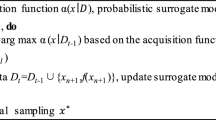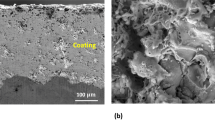Abstract
This study investigates the iterative convergences of neural network for prediction turning tool wear. For the smart manufacturing, the intelligent prediction systems have been gradually developing for processing of CNC machine tools. Recently, many artificial intelligent algorithms of machine learning have been widely applied for forecasting and decision making in intelligent manufacturing. In general, the cutting tool wear in manufacturing of CNC machine tool plays a major role for a high quality and an efficient operation, but it is very difficult to diagnose and prognoses the tool wear for tool life due to many cutting parameters. Therefore, the study investigates the iterative gradient convergences of backpropagation neural network (BNN) algorithm for prediction tool life with analytics of its convergence and stability. The estimative methods of iterative convergences include stochastic gradient descent (SGD), momentum, adaptive gradient (Adagrad), adaptive delta (Adadelta), and adaptive moment (ADAM) algorithms. In BNN prediction model, the data inputs are the cutting speed, feed rate, and total material removal volume and data output is tool wear measured from the microscope. Results showed that the tool wear curves at different cutting conditions can be predicted and trained using BNN model for intelligent manufacturing. In addition, the convergence of ADAM gradient for the tool wear in all cases is the best prediction for the BNN model. However, it is worth to notice that the momentum gradient is faster training speed to converge to a constant error at fewer iteration numbers.








Similar content being viewed by others
References
Jinjiang W, Yulin M, Laibin Z, Robert XG, Dazhong W (2018) Deep learning for smart manufacturing: methods and applications. J Manuf Syst 48:144–156
Vineet J, Tilak R (2017) Tool life management of unmanned production system based on surface roughness by ANFIS. Syst Assur Eng Manag 8:458–467
Alessandro S, Alessandra C, Lev B, Bin D (2019) Intelligent cloud manufacturing platform for efficient resource sharing in smart manufacturing networks. Procedia CIRP 79:233–238
Ray YZ, Xun X, Eberhard K, Stephen TN (2017) Intelligent manufacturing in the context of industry 4.0: a review. Engineering 3:616–630
Nagesh S, Manoj KT, Ghassan B (2019) Next generation smart manufacturing and service systems using big data analytics. Comput Ind Eng 128:905–910
Liang YC, Wang S, Li WD, Lu X (2019) Data-driven anomaly diagnosis for machining processes. Engineering 5:646–652
Yuqian L, Xun X (2019) Cloud-based manufacturing equipment and big data analytics to enable on-demand manufacturing services. Robot Comput Integr Manuf 57:92–102
Dongdong K, Yongjie C, Ning L, Chaoqun D, Dongxing C (2019) Relevance vector machine for tool wear prediction. Mech Syst Signal Process 127:573–594
Juergen L, Thorsten W, Engelbert W (2018) Holistic approach to machine tool data analytics. J Manuf Syst 48:180–191
Daniel FH, Bernd M (2019) Tool wear monitoring of a retrofitted CNC milling machine using artificial neural networks. Manuf Lett 19:1–4
Anli DP, Gert AO (2019) Machine learning in cutting processes as enabler for smart sustainable manufacturing. Procedia Manuf 33:810–817
Peng W, Ziye L, Robert XG, Yuebin G (2019) Heterogeneous data-driven hybrid machine learning for tool condition prognosis. CIRP Ann 68:455–458
Jihong C, Pengcheng H, Huicheng Z, Jianzhong Y, Chenglei Z (2019) Toward intelligent machine tool. Engineering 5:679–690
Wenbin G, Chengrui Z, Tianliang H, Yingxin Y (2019) An intelligent CNC controller using cloud knowledge base. Int J Adv Manuf Technol 102:213–223
Chang WY, Chen CC, Wu SJ (2019) Chatter analysis and stability prediction of milling tool based on zero-order and envelope methods for real-time monitoring and compensation. Int J Precis Eng Manuf 20:1–8
Chang WY, Wu SJ (2016) Big data analysis of a mini three-axis CNC machine tool based on the tuning operation of controller parameters. Int J Adv Manuf Technol 99:1–7
Woon KL, Raymond JHL (2019) Tool condition monitoring in CNC end milling using wavelet neural network based on machine vision. Int J Adv Manuf Technol 104:1369–1379
Pimenov DY, Bustillo A, Mikolajczyk T (2018) Artificial intelligence for automatic prediction of required surface roughness by monitoring wear on face mill teeth. J Intell Manuf 29:1045–1061
Yang Y, Guo Y, Huang Z, Chen N, He N (2019) Research on the milling tool wear and life prediction by establishing an integrated predictive model. Measurement 145:178–189
Somkiat T, Haruetai L (2018) Intelligent monitoring and prediction of tool wear in CNC turning by utilizing wavelet transform. Int J Adv Manuf Technol 99:2219–2230
Jianlei Z, Binil S, Yi C, Paul HC, Lee YS (2017) Particle learning in online tool wear diagnosis and prognosis. J Manuf Process 28:457–463
Galipothu DS, Deivanathan R (2019) Early detection of drilling tool wear by vibration data acquisition and classification. Manufacturing Letters 21:60–65
Dongdong K, Yongjie C, Ning L (2018) Gaussian process regression for tool wear prediction. Mech Syst Signal Process 104:556–574
José CC, Dany SD, Emmanuel OE, Álisson RM (2014) Wear model in turning of hardened steel with PCBN tool. Int J Refract Met Hard Mater 47:61–70
Jinjiang W, Jianxing Y, Chen L, Robert XG, Rui Z (2019) Deep heterogeneous GRU model for predictive analytics in smart manufacturing: application to tool wear prediction. Comput Ind 111:1–14
Lip HS, Li WH, Ming CY, Farazila Y, Ming KY (2018) Sensitivity analysis of drill wear and optimization using adaptive neuro fuzzy-genetic algorithm technique toward sustainable machining. J Clean Prod 172:3289–3298
Zhiwen H, Jianmin Z, Jingtao L, Xiaoru L, Fengqing T (2019) Tool wear predicting based on multi-domain feature fusion by deep convolutional neural network in milling operations. J Intell Manuf 30:1–14
Yuxuan C, Yi J, Galantu J (2018) Predicting tool wear with multi-sensor data using deep belief networks. Int J Adv Manuf Technol 99:1917–1926
German T, Giovanna MA, Panorios B, Svetan R (2018) Online tool wear classification during dry machining using real time cutting force measurements and a CNN approach. J Manuf Mater Process 2:72
Alipour M, Mirjavadi S, Besharati GMK, Razmi H, Emamy M, Rassizadehghani J (2012) Effects of Al-5TI-1B master alloy and heat treatment on the microstructure and dry sliding wear behavior of an Al-12Zn-3Mg-2.5 cu alloy. Iran J Mater Sci Eng 9(4):8–16
Seyed SM, Mohammad A, Soheil E, Somayeh K (2017) Influence of TiO2 nanoparticles incorporation to friction stir welded 5083 aluminum alloy on the microstructure, mechanical properties and wear resistance. J Alloys Compd 712:795–803
Essam M (2017) Effect of multi-pass friction stir processing on the microstructure, mechanical and wear properties of AA5083/ZrO2 nanocomposites. J Alloys Compd 726:1262–1273
Seyed SM, Mohammad A, Hamouda AMS, Givi MKB, Emamy M (2014) Investigation of the effect of Al-8B master alloy and strain-induced melt activation process on dry sliding wear behavior of an Al-Zn-mg-cu alloy. Mater Des 53:308–316
Chang WY, Fang TH, Chao KC, Huang CC (2017) Physical characteristics of NixZr100-x alloys based on stretching and heating processes using molecular dynamics simulation. Protect Mets Phys Chem Surf 53:978–983
Ebrahimi M, Hanzaki AZ, Abedi HR, Azimi M, Mirjavadi SS (2017) Correlating the microstructure to mechanical properties and wear behavior of an accumulative back extruded Al-mg 2 Si in-situ composite. Tribol Int 115:199–211
Funding
This work was partially supported by the Ministry of Science and Technology, Taiwan, under Grant No. MOST 108-2221-E-150-034. This work was also partially supported by 108AF005, and 108AF021.
Author information
Authors and Affiliations
Corresponding author
Additional information
Publisher’s note
Springer Nature remains neutral with regard to jurisdictional claims in published maps and institutional affiliations.
Rights and permissions
About this article
Cite this article
Chang, WY., Wu, SJ. & Hsu, JW. Investigated iterative convergences of neural network for prediction turning tool wear. Int J Adv Manuf Technol 106, 2939–2948 (2020). https://doi.org/10.1007/s00170-019-04821-9
Received:
Accepted:
Published:
Issue Date:
DOI: https://doi.org/10.1007/s00170-019-04821-9




